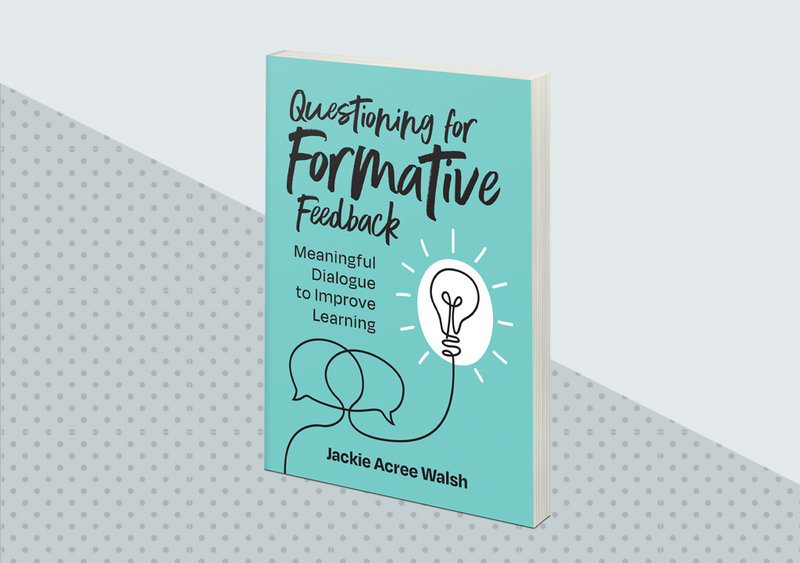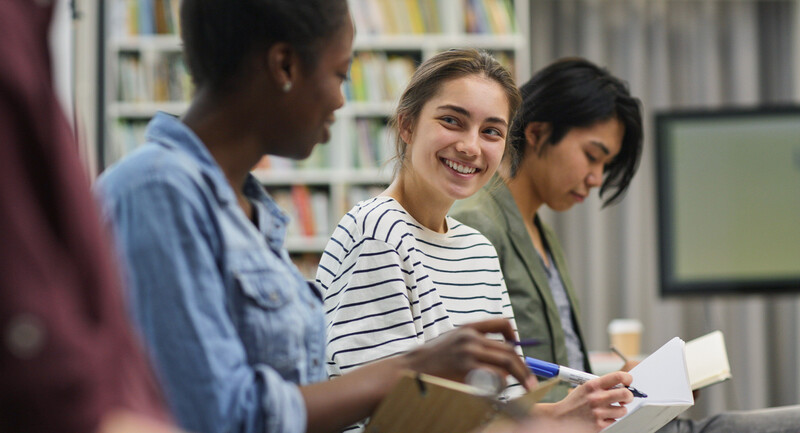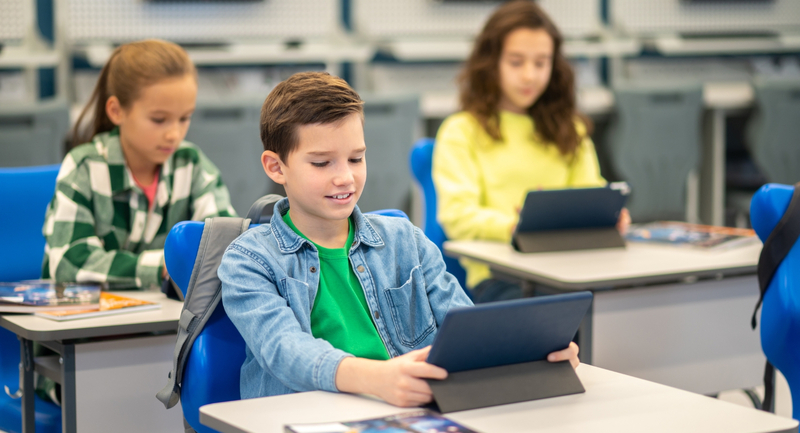As students face new challenges, empowering them to seek and provide feedback has never been more important. Below, Jackie Acree Walsh, a leading expert in the principles of quality questioning, provides three roles students can take on, and the accompanying responsibilities that can guide students to become feedback exemplars. Educators can think of the following as student job descriptions, revealing what is required to be a successful learner.
Student Roles and Responsibilities
Defining and clarifying students’ various roles and responsibilities is essential if they are to take control of their learning. Viewing these through the lens of quality questioning, dialogue, and feedback is necessary to identify and develop the skills and dispositions that support formative processes. When this is done, three significant roles and associated responsibilities emerge.
1. Student as Self-Assessor
Students’ ability to seek and provide feedback is contingent on their ability to self-assess—to compare their current knowledge and skills to those embedded in a learning target. Self-assessment also encompasses an appraisal of one’s ability to identify and use the cognitive strategies needed to attain a given learning target. When students view themselves as assessors of their own learning, they can then provide others with accurate feedback about their current understanding or performance and use feedback provided by teachers and peers to reflect and self-correct.
- They use learning targets as a GPS to guide and monitor learning. Self-assessment depends on learners’ understanding of the purpose and substance of learning outcomes. Successful self-assessors focus on and make meaning of daily learning targets and refer to them throughout a lesson. They use these as benchmarks to measure progress in learning.
- They ask questions of themselves to identify possible gaps in learning. A core skill of self-assessment is the ability to compare one’s current level of knowledge and skill proficiency to that identified in a learning target. Successful learners engage in this metacognitive activity throughout a lesson and silently and routinely generate and answer questions to achieve this end.
- They use others’ questions as catalysts for thinking and self-assessment. Skilled self-assessors know that other people’s questions are tools for self-assessment. This is true of all classroom questions—those posed by teachers, posed by peers, directed to oneself, and directed to others.
2. Student as Knowledge Constructor
Developing a clear, complete, and accurate understanding of content is the desired outcome of formative feedback. Questioning and dialogue support students in the use of feedback to accomplish this end. Learners are therefore motivated to engage in these two practices when they recognize that no one can “give” them knowledge—that they are responsible for engaging in the cognitive processes that support construction of their own understanding.
- They use questions to make new connections. Hattie and Clarke note in their book, Visible Learning: Feedback, that questions to activate prior knowledge and experiences are vastly underused in most classrooms. Learners who understand their role as knowledge constructors value and use questions to bring prior knowledge to the forefront—both to test it for accuracy and, if valid, to connect it to new facts and skills.
- They proactively seek feedback to address identified needs. A significant amount of research focuses on students’ help-seeking behaviors. For example, Hattie’s review of variables that affect student achievement reveals this behavior to have a high effect size (d = 0.72). The most accessible tool for seeking help is question-asking.
- They make meaning of feedback and connect this to current thinking. Meaning-making and connection-making are important cognitive skills, both of which are required for students to use feedback from others. To be effective, external feedback must “ultimately trigger inner dialogue in students’ minds” around the focus of the learning. This involves students in actively decoding feedback information and internalizing it. Active listening is a prerequisite to this, but listening cannot be assumed. It must be taught through modeling and direct instruction.
Students’ ability to seek and provide feedback is contingent on their ability to self-assess—to compare their current knowledge and skills to those embedded in a learning target.
Jackie Acree Walsh
3. Student as Collaborative Contributor
This role is the gateway to a classroom learning community in which students learn with and from one another. Students who discharge related responsibilities understand the importance of collaborative thinking. They listen to and value their peers’ comments, and they are comfortable and accountable in sharing their own thinking and insights.
- They provide honest responses to questions to let others know their level of understanding. This student mindset cannot be overemphasized. By openly sharing their current thinking, students enable teachers to offer helpful feedback. They also contribute to peer learning through both correct and incorrect responses. When students embrace the norm related to learning from errors, they appreciate classmates’ responses as catalysts for reflecting on their own thinking. In a CORE (collaborative, open, respectful, equitable) culture, peers react to one another’s responses with corrective and affirming feedback as they engage in dialogue.
- They actively listen to others during class dialogue. Hattie argues that “the most important job of teachers is to listen.” Most of us would agree this is also true for students. Listening is key to learning—both in and out of school—yet students are rarely provided instruction in how to listen.
- They provide honest feedback and ask questions to peers. Peer-to-peer interactions are powerful sources of feedback when students view them as such. This involves shifting the thinking of those students who believe teachers are the source of all knowledge in the classroom. A CORE culture emphasizes the importance of respect for peers’ thinking and opens up possibilities for students to learn from one another. It also encourages individual students to openly agree and disagree with one another and to pose questions that clarify the thinking of those who may have different perspectives. Peer feedback is potentially the most powerful of all feedback. This is attributable to both the learner’s ability to understand the language used by a classmate and the proximity both students have to the learning and their experiences.
Figure 1: Student Roles and Responsibilities in a Formative Classroom
Source: Walsh, A. Jackie (2022). Questioning for Formative Impact: Meaningful Dialogue to Improve Learning. Jackie Acree Walsh.
Why It Matters
The three roles and related responsibilities spotlighted contribute to effective student engagement. Again, educators can think of these as a sort of job description for students—a resource for conveying what is required to be successful learners. Being explicit with students about these promotes more effective involvement in questioning, dialogue, and formative feedback. Teaching and reinforcing the roles and responsibilities builds students’ skill and will to participate confidently.
Quality Questioning for Meaningful Feedback
Empowering learners by defining their roles and responsibilities is only a piece of the formative feedback puzzle. How do quality questioning, productive dialogue, and authentic use of feedback address the needs of a new generation of learners?









